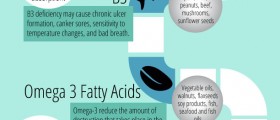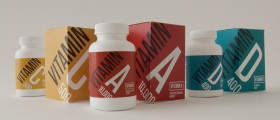
Vitamins are supplements that our bodies need to develop and function normally. A vitamin is an organic compound required as a nutrient in tiny amounts by an organism. There are fat-soluble vitamins, which can be stored in the body and used for a longer period of time, and water-soluble vitamins which don’t get stored as much in the body. Water-soluble vitamins, such as vitamin C and the group of vitamins B, need to be replaced often.
Hypervitaminosis usually occurs more with fat-soluble vitamins, which are stored in the liver and fatty tissues of the body. This condition of high storage levels of vitamins leads to toxic symptoms. It is also known as vitamin poisoning or vitamin overdose. The medical names of the different conditions are derived from the vitamin involved: an excess of vitamin A, for example, is called hypervitaminosis A.
The function of vitamin A
Vitamin A not only plays an important role for good eyesight but it is also helps the immune system, maintenance of epithelial and mucosal tissues, growth, reproduction, and bone development. Vitamin A is known to enhance the function of white blood cells, increase the response of antibodies to antigens, and to have anti-viral activity. Vitamin A is also necessary for normal cell growth and development, for reproductive processes in both males and females, and for normal bone metabolism.Vitamin A toxicity symptoms
Excessive Vitamin A intake usually occurs through the consumption of large amounts of Vitamin A in food and through dietary supplements. Most causes of vitamin A toxicity are due to accidental ingestion of doses exceeding 660,000 IU (200 mg of retinol equivalents) and 330,000 IU (100 mg of retinol equivalents) by adults and children, respectively. In these cases, symptoms of vitamin A overdose are acute and may include a loss of appetite, irritability, fatigue, weakness and vomiting.
Chronic vitamin A toxicity may occur after the prolonged period of daily intake of the vitamin A in amounts exceeding 14,000 IU (4.2 mg or retinol equivalents) in children and 25,000 IU in adults. The chronic toxicity usually develops in individuals taking high doses of vitamin A compounds to treat skin disorders, or in patients with liver conditions. The symptoms of chronic toxicity in children include growth retardation of the long bones and premature epiphyseal bone closing. In adults, these symptoms include different health conditions such as dry and itchy skin, dry and brittle fingernails, hair loss, headaches, visual changes, bone and muscle pain, fatigue, irritability, depression, fever, liver damage, anemia, and/or a loss of appetite.

















Your thoughts on this
Loading...